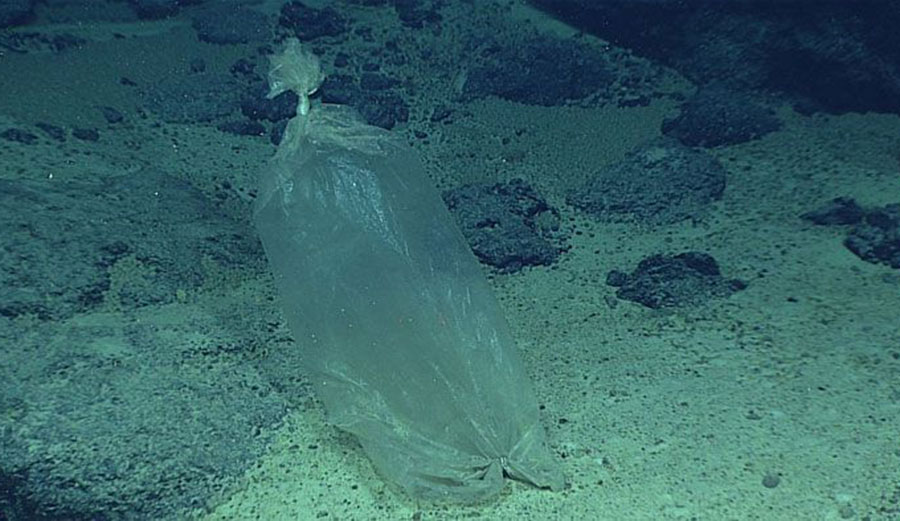Rachel Pendergrass | 15 November 2018
Giant gyers of floating plastic have long been at the forefront of the public conversation around ocean pollution, but there has been a dearth of research on the deeper issue of plastic that reaches below the surface. Since the onset of mainstream plastic production begin in the 1940s and 1950s, plastic pollution in the ocean has been a rapidly growing threat. A 2017 study on the production and eventual fate of all plastic estimated that of the 8300 million metric tons of virgin plastic produced by 2015, 79% of it had accumulated in landfills or the natural environment.
Despite the constant influx of plastic to the ocean, the amount of surface plastic isn’t growing proportionally. Simulations from another 2017 study show that 99.8% of the plastic that entered the ocean since 1950 settled below surface level. Scientists have found microplastic contamination in the water column, in bottom-dwelling animals, and in ocean sediment, and a 2015 study of deep-sea sediment in North Atlantic and Arctic Ocean reported some of the highest microplastic concentrations reported to date.
A Scottish team recently published the first ever long-term monitoring study of deep-sea microplastic contamination. The study involved specimens from a large deep-sea brittle star (Ophiosmusium lymani) and a gelatinous, mucousy species of starfish (Hymenaster pellucidus), collected from Rockall Trough in the North East Atlantic. These specimens were part of an archival collection gathered over the course of forty years by the The Scottish Association for Marine Science. The findings are unsurprising. There is microplastic contamination at the bottom of Rockall Trough. Since the contamination levels were relatively consistent across the entire timeline of the study, it is likely that the microplastics have been hanging around in Rockall Trough for a while–further back than the first samples collected in 1976.
We don’t really understand what effect all this rain of microplastic has on inhabitants of the deep ocean but the few studies that do exist are predictably grim. This past October, one study examined the interaction between plastic and cold-water corals (Lophelia pertusa). The larger plastic contaminants physically blocked coral polyps from feeding, and the microplastics significantly reduced coral growth rates. None of that is great news for the coral, but it’s also ill tidings for the entire ecosystem that relies on them, including commercial species.
Microplastics persist and accumulate inside the bodies of crabs, mussels, and other fauna that ingest them, but there isn’t much data on what, exactly, all that microplastic does to the consumer. That’s just one more question among the many facets of research still needed to be done surrounding deep-sea microplastic contamination. The researchers behind the recent Rockall Trough study are hoping that others might be encouraged to use their own archival collections to get this sort of long-term view of the fate and behavior of microplastics.
Research like this highlights one of the many areas in which deep-sea mining contractors can help contribute to broader ocean stewardship initiatives. Deep-sea mining operators have unparalleled access to the deep seafloor and an unprecedented capacity to conduct long-term monitoring in the deep ocean. Making opportunistic samples available for microplastics research is one potential low-risk, high-reward partnership that can benefit all ocean stakeholders.


